You want to read this article to learn if Poinsettias can live outside in the winter.
Poinsettia or Euphorbia pulcherrima flowers in mid-winter, according to New Mexico State University. But you might be wondering if you can grow them outdoors in winter. Other questions you might have are whether they can be in a cold room, close to a cold window, or even in front of your door.
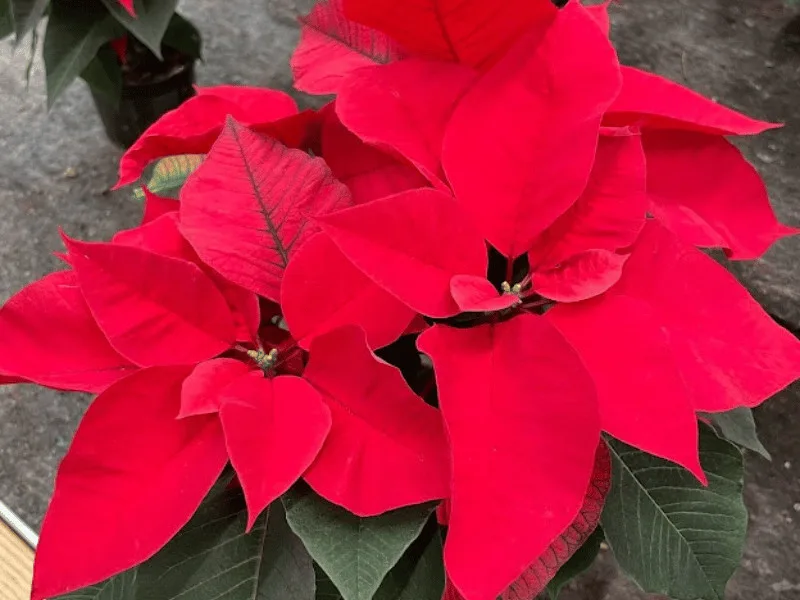
Table of Contents
Can Poinsettias Live Outside in the Winter?
Poinsettias can not live outside in the winter. The coldest a Poinsettia can survive is 56°F (13°C) at night. They perform best in regulated daytime temperatures of 65 to 75 degrees Fahrenheit (18-24 degrees Celsius). They prefer slightly colder climes at night, between 56 and 60 degrees Fahrenheit (13-15.6 degrees Celsius).
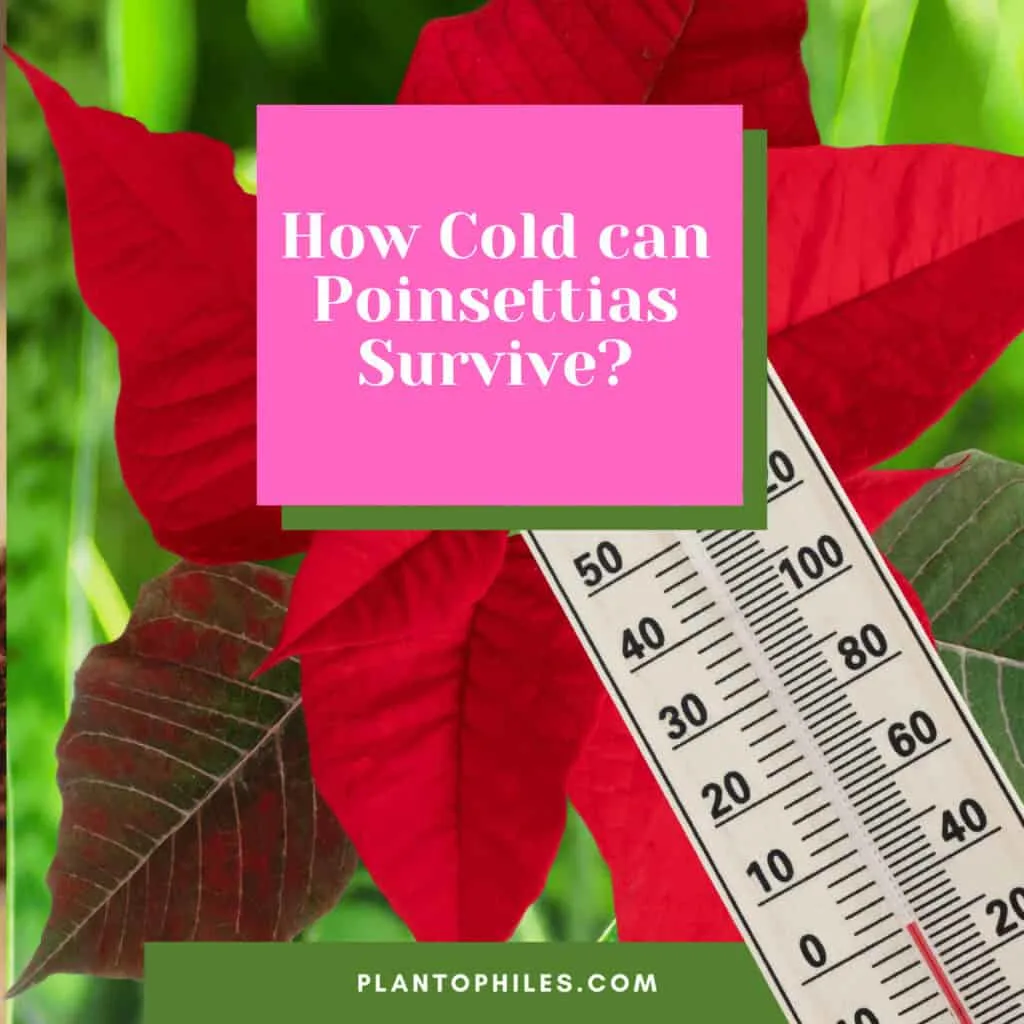
Their leaves start to drop at temperatures below 50 degrees Fahrenheit (10 degrees Celsius). Sustained exposure will kill their root systems.
Can Poinsettias be outside in the cold?
Poinsettias cannot be outside in the cold. The Christmas Star is a tropical plant from Mexico. These plants are not frost-hardy. Poinsettias will wilt and die below 50°F (10°C).
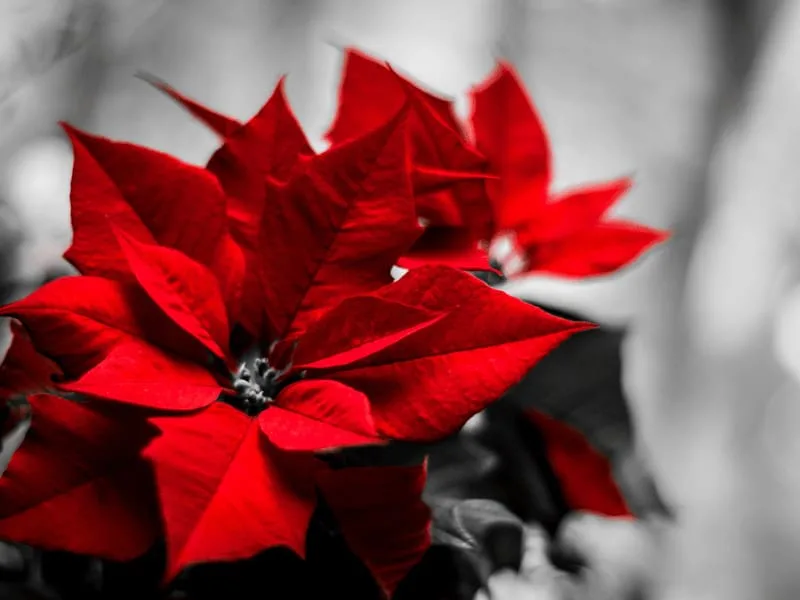
Poinsettia Temperature
Poinsettias perform best in regulated daytime temperatures between 65 and 75 degrees Fahrenheit (18 to 24 degrees Celsius).
But, these pretty blooms prefer slightly colder climes at night, between 60-65 degrees Fahrenheit (16-18 degrees Celsius).
If you decide to move or grow your poinsettias outdoors, be mindful that frost can greatly damage them.
Below the 50-degree Fahrenheit mark (10 degrees Celsius), their leaves may start to drop. Sustained exposure to this cold will kill their root systems completely.
To give your poinsettias a fighting chance, it is better to keep them indoors where temperatures can be regulated and only move them outdoors when the weather warms up.
I recommend waiting until the threat of frost has ceased and ambient temperatures are above 65 degrees Fahrenheit (16 degrees Celsius) during the day. No lower than 50 degrees Fahrenheit at night (10 degrees Celsius).
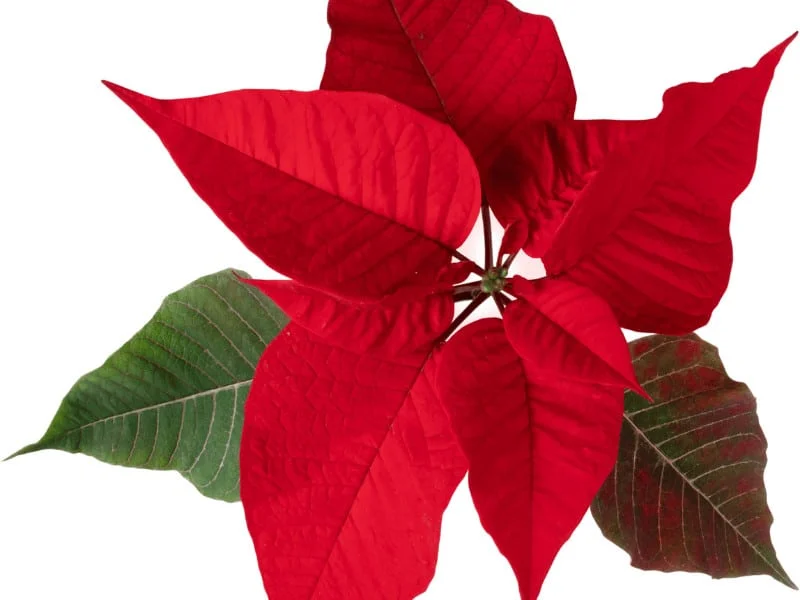
How to care for indoor poinsettias
There are a few things that I look for when purchasing poinsettias and a few preventive care measures that I practice when I bring them home.
Firstly, I always select a healthy plant with vigorous leaf growth down to its base.
Ideally, the large colorful blooms (bracts, not flowers) should not be broken or damaged, and the tiny yellow buds at the center of the bracts should be tight and intact.
Poinsettias hate cold drafts and, for this reason, are often sold in a protective wrapping of cellophane or paper.
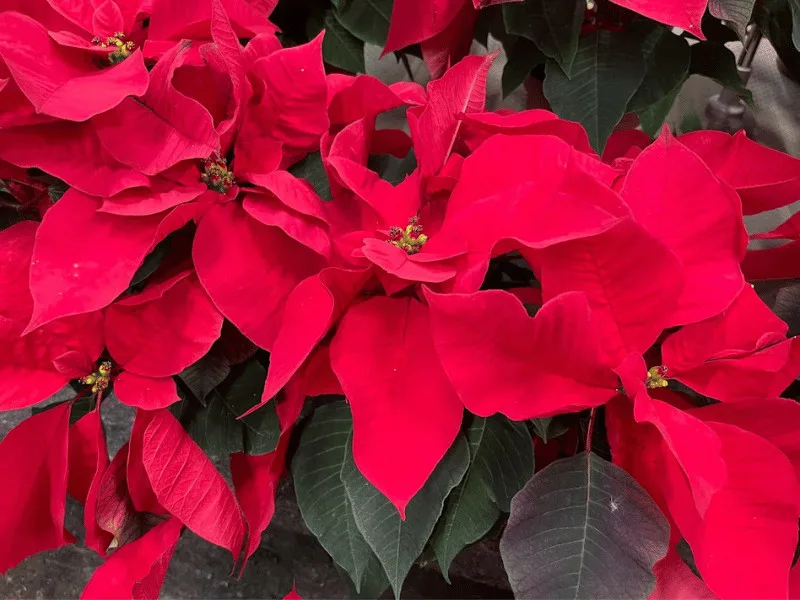
This is vital to protecting them from cold and wind damage, which can cause premature leaf dropping and harm an otherwise healthy plant.
At home, I always look for a bright spot in indirect sunlight, preferably close to a window, but I don’t let them touch freezing glass and keep them far away from drafts.
Any fluctuating temperature can be harmful, so fireplaces, heaters, and fans should also be avoided.
Roughly six hours of sunlight daily is a good measure of their needs.
Interestingly, a poinsettia’s rich color blooms most successfully with adequate access to darkness, which requires at least 14 hours per night.
This simulates its natural growing conditions of short days and long nights.
Finally, and once the above measures are in place, I regularly check their soil to ensure it is neither too dry nor too soggy, which can cause root rot.
How to Care for Poinsettias Outdoors
Poinsettias are hardy to USDA hardiness zones 9-11.
Outdoor poinsettias can reach sizes of up to 10 feet (3 meters), as opposed to their much smaller indoor counterparts, and with sufficient care, they will grow quite successfully.
However, great caution should be practiced when moving them outside as they are very susceptible to frost damage.
In temperate areas, May, June, and July are good times for relocation, but only once all threat of frost has passed, and the plant has entered a dormant phase.

Whether you keep Poinsettias in their pots or plant them in the ground, good quality mulch can also help keep them safe in unseasonably cold evenings.
I always check their soil to ensure I am not suffocating their roots.
In addition, I tend to pinch back new tips in the hotter days of summer, effectively promoting more significant growth.
Fertilizing poinsettias is never a bad idea, but this should be regulated via larger doses in the spring, tapered off at the beginning of fall.
How to Protect Poinsettias from Frost
Unfortunately, there is no way to protect Poinsettias from frost.
They do not fare well in the cold, and temperatures below their tolerance level of 50 degrees Fahrenheit (10 degrees Celsius) will cause them significant harm and likely kill them.
My best advice is to immediately move them indoors when the cold weather arrives and keep them safe until the warmer days return.
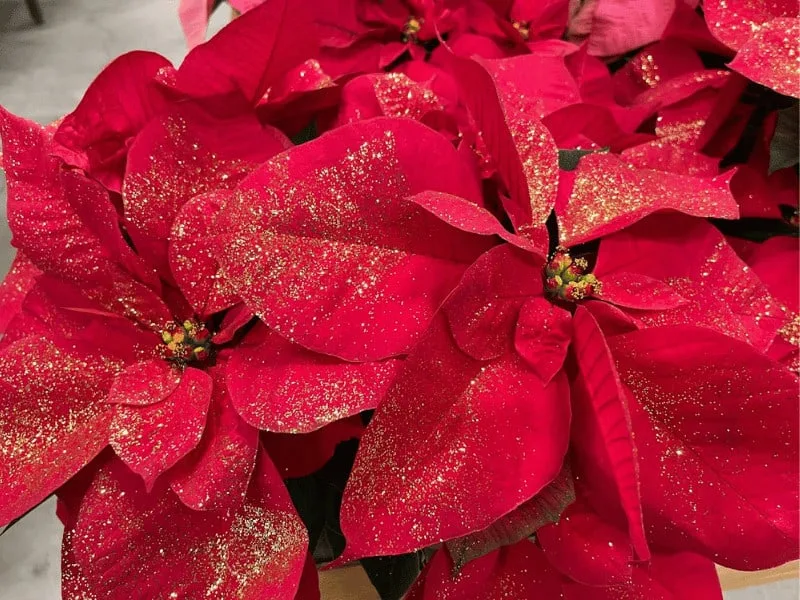
Can a Poinsettia Recover from Cold Damage?
This depends a lot on how severe the damage is. A Poinsettia can be revived with a lot of tender love and care if it is mild.
Move it inside where temperature can be regulated, trim off damaged leaves, and ensure it has the correct measure of indirect sunlight (6 hours per day) and darkness (14 hours per day). Most importantly, make sure you regulate the temperature indoors.
Keep its soil moist, but don’t drown it. A houseplant fertilizer in small doses may also give it an energy boost.

Should I cover my Poinsettias?
You can cover your Christmas star to make sure they receive sufficient darkness. Indoor plants can be placed in dark spaces or covered with boxes. Potted outdoor poinsettias can be covered with a row cover or burlap. Twelve hours or more of darkness will increase blooming.
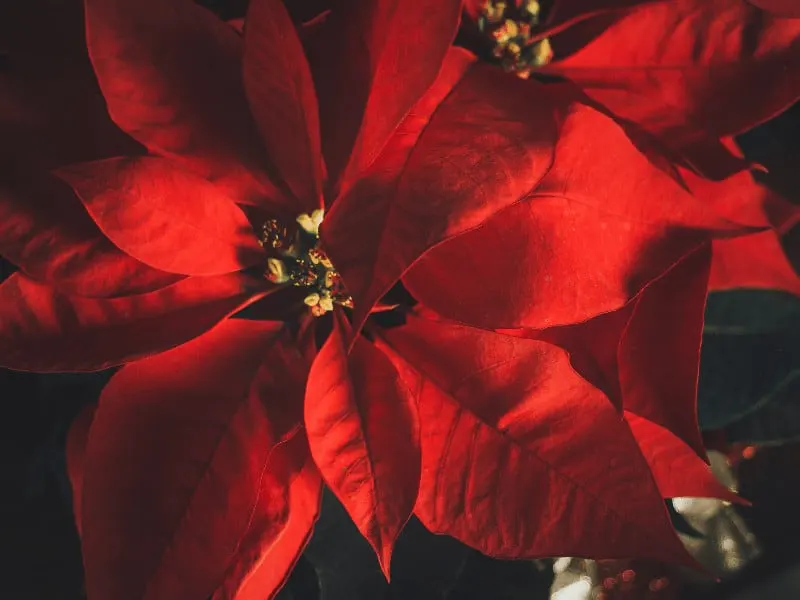
Conclusion
A Christmas Star cannot be kept outside in winter as they do not tolerate temperatures below 50 degrees Fahrenheit (10 degrees Celsius). They can be kept as perennial plants and will bloom every year. You can grow them for multiple seasons, but Poinsettias cannot live outside in the winter.

Daniel has been a plant enthusiast for over 20 years. He owns hundreds of houseplants and prepares for the chili growing seasons yearly with great anticipation. His favorite plants are plant species in the Araceae family, such as Monstera, Philodendron, and Anthurium. He also loves gardening and is growing hot peppers, tomatoes, and many more vegetables.


